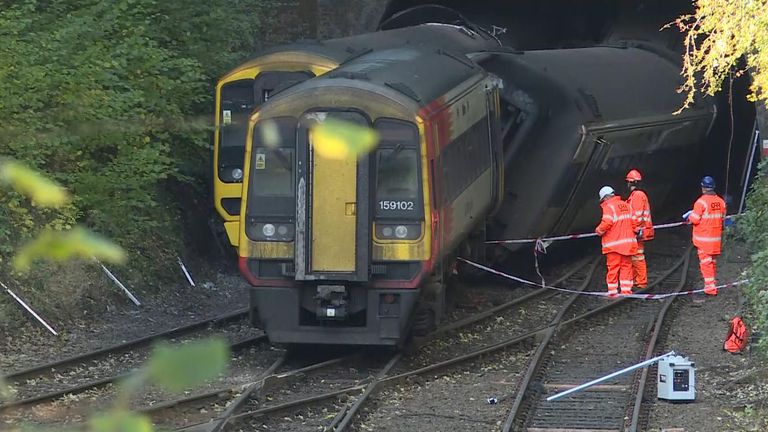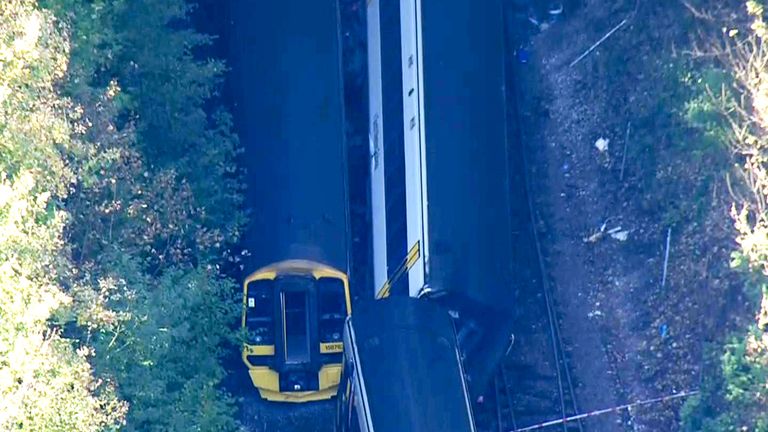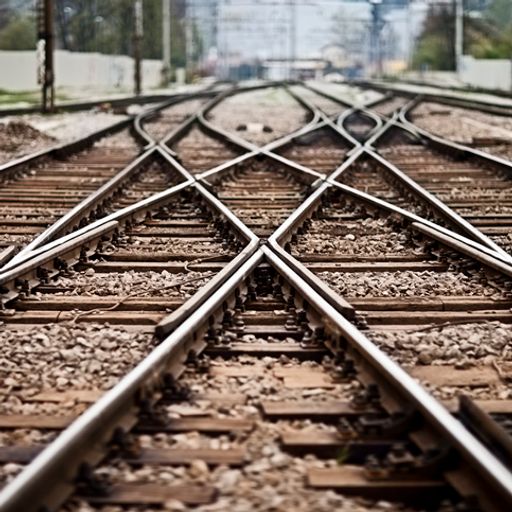One of the trains involved in the Salisbury crash on Sunday ran 220 metres past a stop signal before hitting another service, investigators have said.
The driver did attempt to brake before reaching the signal, the Rail Accident Investigation Branch (RAIB) added.
But despite the intervention of the train's automatic protection system, which should assist with emergency braking, the South Western Railway (SWR) train did not begin to slow as it should have done.
In a preliminary report, the RAIB said that was because its wheels slipped on the rails, causing it to slam into the side of a Great Western Railway service.
Both trains derailed and continued "some distance" into Fisherton Tunnel before coming to a stop, the RAIB said.
It will be looking at how Network Rail manages what it calls "low wheel/rail adhesion".
In addition, it will examine Network Rail and SWR's general policies on the subject.
The driver of the SWR service suffered "life-changing injuries", police said.
Thirteen passengers were treated in hospital for minor injuries.
Low adhesion can be a particular problem during the autumn, when leaves are falling from trees.
When trains pass over leaves it creates a thin, slippery layer, similar to black ice on the roads, making it more difficult to brake and accelerate.
Some operators publish modified autumn timetables to allow trains to be driven more cautiously at this time of year.
Martin Frobisher, Network Rail's safety and engineering director, said the issue "affects railways across the world" and is something that industry bodies "work hard to combat so that we can run trains safely and reliably throughout autumn".
Disruption to services through Salisbury is expected to continue until at least Monday.






